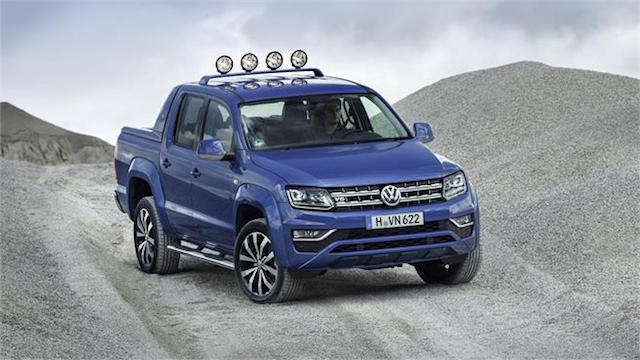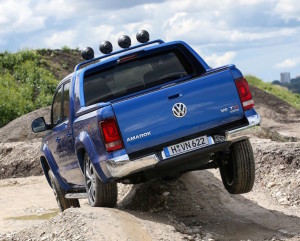
Volkswagen’s V6 Amarok ute will hit the ground running in New Zealand in November, if only because it is being built at the company’s plant in Hanover, Germany.
The updated Amarok V6 will come from Germany until towards the middle of next year, when production shifts to VW’s South American plant, in Pacheco, Argentine, alongside the facelifted 2.0-litre variant.
Until then the Aventura and High Line variants will be the only German-built V6 utes on the NZ market. And therein lies the beefier Amarok’s appeal, given – rightly or wrongly – Germany’s reputation for quality.
All Amarok’s ute rivals are built in Thailand. No question that they are quality offerings, but a German-built ute with the only V6 engine in the segment – and the most powerful – has niche appeal, both new and used.
 “The first shipment is sold out,” said Volkswagen NZ general manager Tom Ruddenklau. “I could have sold it six times over. No question we have supply problems (with the V6) but nevertheless I’m pretty excited about it.”
“The first shipment is sold out,” said Volkswagen NZ general manager Tom Ruddenklau. “I could have sold it six times over. No question we have supply problems (with the V6) but nevertheless I’m pretty excited about it.”
While the early 165kW/550Nm V6 variants will be exclusive, they aren’t the only Amaroks with a Made in Germany sticker on the NZ market. Special editions of the 2.0-litre model over the past few years were also made in Hanover.
Meantime, VW is developing an SUV based on the Amarok to tackle ute-derived rivals like the Ford Everest, Toyota Fortuner, Mitsubishi Pajero Sport, Holden Trailblazer, and Isuzi MU-X.
The VW will be based on the next-generation Amarok, due in 2018-19. A VW Group Australia executive said work on the SUV had begun again, after being shelved early in the Amarok programme.
“There is some very serious development happening at the moment for an SUV based on Amarok, which would be quite a large passenger vehicle-type setup,” said Carlos Santos, the director of VW commercial vehicles across the Tasman.
“It’s not confirmed and it’s been going on since the start of Amarok, but they have just started to reignite discussion again,” he told journalists in Melbourne.
VW planned an Amarok-based SUV at the beginning of the ute’s development almost 10 years ago. But it shied away from the project, believing it best to first concentrate on the growing ute market and build an SUV later in the Amarok’s life cycle.
That is exactly what has panned out, as demand for SUVs of every kind continues to grow. It’s no coincidence that the introduction of the VW Group’s 3.0-litre V6 diesel in the Amarok later this year has kick-started the plan for a global SUV.
“Obviously with this V6 engine, that is an engine that is able to be sold in the US potentially,” Santos said. “It would never get into the States with current 2.0-litre (four-cylinder diesel).
“But the V6 is an engine we know from (Porsche) Cayenne, from (Audi) Q7, from Touareg, so it’s a well-proven, known engine.”
The renewed Amarok-based SUV project is understood to be separate from the seven-seat SUV being built for the US market.
